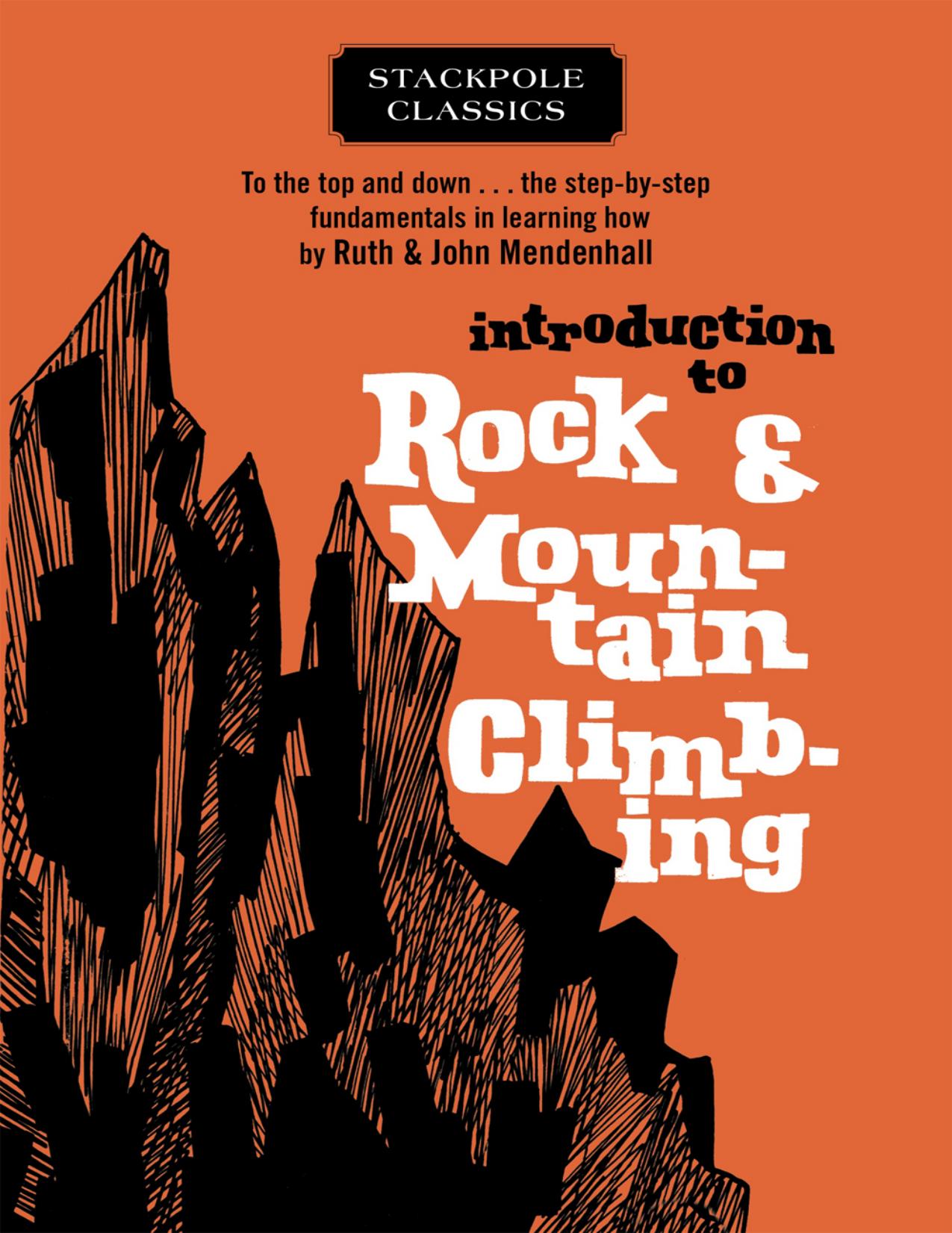Introduction to Rock and Mountain Climbing by Ruth Mendenhall & John Mendenhall

Author:Ruth Mendenhall & John Mendenhall
Language: eng
Format: epub, pdf
ISBN: 9780811767309
Publisher: Stackpole Books
Published: 2019-02-14T16:00:00+00:00
Glissading
Glissading is a speedy, restful, and wonderful way to go down, when texture and gradient are just right. It is also potentially dangerous if you misjudge the slope and conditions. Practice on short slopes with obviously safe runouts. Gradually work up to longer and faster slopes. But always look for a safe runout as a safety measure if you should lose control, for instance by hitting an unexpectedly icy spot. It just isn’t healthy to end a glissade in a rock pile or by shooting over a cliff.
Glissades are made sitting or standing. The sitting position is safest and easiest. To get ready, remove your crampons and stow them safely; batten down your clothing and put on mittens; hold the axe in arrest position, with the wrist loop on. Sit down with knees straight and take off. The point of the axe can be used in the snow at either side for a rudder to aid in slight changes of direction, or to slow you down a bit. If you want to stop, dig in your heels and your axe point, or roll over in a self-arrest. A major change in direction, to avoid obstacles below, must be accomplished by stopping, and traversing on foot to a new starting point. On quite soft snow, pillows of it may form under your behind; hunch over them. Rough terrain or small rocks may be rather bruising. The most uncomfortable effect is getting your clothes wet. If keeping dry is important, walk or make a standing glissade.
A standing glissade is done with more style and aplomb, and is suited to steeper slopes when sufficient experience and judgment have been gained. It is more strenuous on the legs too. It resembles skiing on the feet, with the axe (loop on wrist) used to one side for support and steering. The standing glissade must be undertaken by the beginning climber with great caution, and first used only on short slopes to get the feel of it. Good judgment of snow conditions in relation to the gradient, as well as skill at keeping the glissade under control, is required for all gliss’ading that is done safely. And never fail to consider the runout.
Use your equipment until it no longer feels awkward; work on basic techniques until they become automatic both on practice slopes and on easy climbs. You are then ready to concentrate on the multitude of other factors which contribute to proficiency and judgment in ascents and descents on snow, ice, and glacier climbs.
Download
Introduction to Rock and Mountain Climbing by Ruth Mendenhall & John Mendenhall.pdf
This site does not store any files on its server. We only index and link to content provided by other sites. Please contact the content providers to delete copyright contents if any and email us, we'll remove relevant links or contents immediately.
In a Sunburned Country by Bill Bryson(3374)
Annapurna by Maurice Herzog(3302)
How to Read Nature by Tristan Gooley(3083)
Dangerous Girls by Haas Abigail(2843)
SAS Survival Handbook by John 'Lofty' Wiseman(2583)
The Lost Art of Reading Nature's Signs by Tristan Gooley(2549)
In the Woods by Tana French(2421)
The Stranger in the Woods by Michael Finkel(2330)
Food and Water in an Emergency by Food & Water In An Emergency(2273)
Guns, Germs and Steel by Diamond Jared(2205)
Wild: From Lost to Found on the Pacific Crest Trail by Cheryl Strayed(2143)
Everest the Cruel Way by Joe Tasker(2135)
Backpacker the Complete Guide to Backpacking by Backpacker Magazine(2111)
Trail Magic by Trevelyan Quest Edwards & Hazel Edwards(2063)
Ultimate Navigation Manual by Lyle Brotherton(2055)
Sea Survival Handbook by Keith Colwell(2044)
Welcome to the Goddamn Ice Cube by Blair Braverman(1888)
Birds of the Pacific Northwest by Shewey John; Blount Tim;(1876)
The Last Flight by Julie Clark(1833)
